What Is Organic CTR?
Organic CTR (click-through rate) is the percentage of searchers that click through to your website from the search results. Organic CTR is influenced by your ranking position and the appearance of your search snippet. Things like featured snippets, rich results, titles, descriptions, and URLs play a role in your CTR.
Organic CTR is calculated by dividing the total number of clicks your website receives from search by the total number of impressions your site appears in search results and multiplying that number by 100.
For example, if your webpage appears 1,000 times in search results (impressions) and receives 50 clicks, your organic CTR would be 5% (50 clicks ÷ 1,000 impressions X 100).
The higher your CTR the greater percentage of traffic you’re going to be getting from organic search.
Why Is Organic CTR Important?
Knowing and improving your organic click-through rate is important for two reasons.
1. More Traffic
By improving your organic CTR, you can get more traffic from the search engines without doing any additional work. Even if your site stays at the same spot in the rankings, you can improve your CTR and get more organic traffic.
For example, if you improve your CTR from 5% to 10%, you double your search engine traffic without additional SEO work.
2. Improve Your Overall Rankings
Your organic CTR is more likely a ranking signal. This means that Google might look at this to determine what kind of results users want to see for a particular query. For example, if your website ranks high for a keyword but has a low CTR, this is a signal that users are not happy with the results and may lead to lower rankings.
On the other hand, if a website is lower on the SERPs but has a high CTR, this is a good signal that can potentially push your website higher in the results.
What Is a Good CTR For Organic Search?
Organic click-through rates vary for several reasons. They depend heavily on the search query, ranking position, number of ads, user's device, location, and what search features (featured snippets, rich results) Google shows for a particular search.
While you cannot say what is "bad" or "good" CTR, you can use studies to compare your performance. A recent study by FirstPageSage revealed that websites appearing in the top three positions of Google get more than 60% of all clicks.
The #1 result has an average CTR of 39.8%, the #2 result 18.7%, and the #3 result 10.2%.
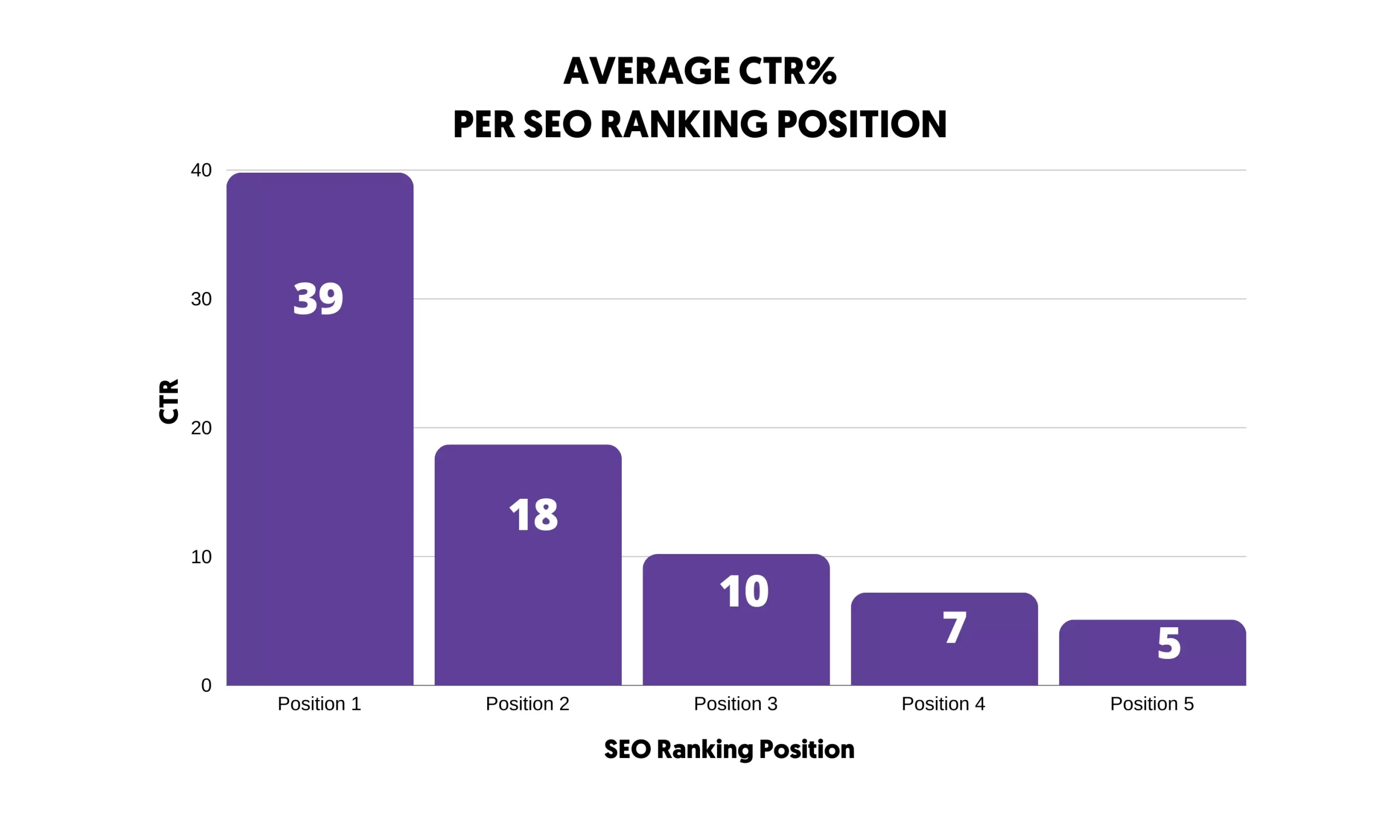
You can compare your CTR (see below) with these results to determine if your performance is good or if there is room for improvement.
How To Find Your Organic CTR?
The easiest way to find your CTR for a page or particular keywords is to use the Search Results report of the Google Search Console.
Follow these steps to determine your CTR:
- Open up Google Search Console.
- Navigate to "Search Results" under Performance
- Check the boxes that say Total Impressions and Average CTR.
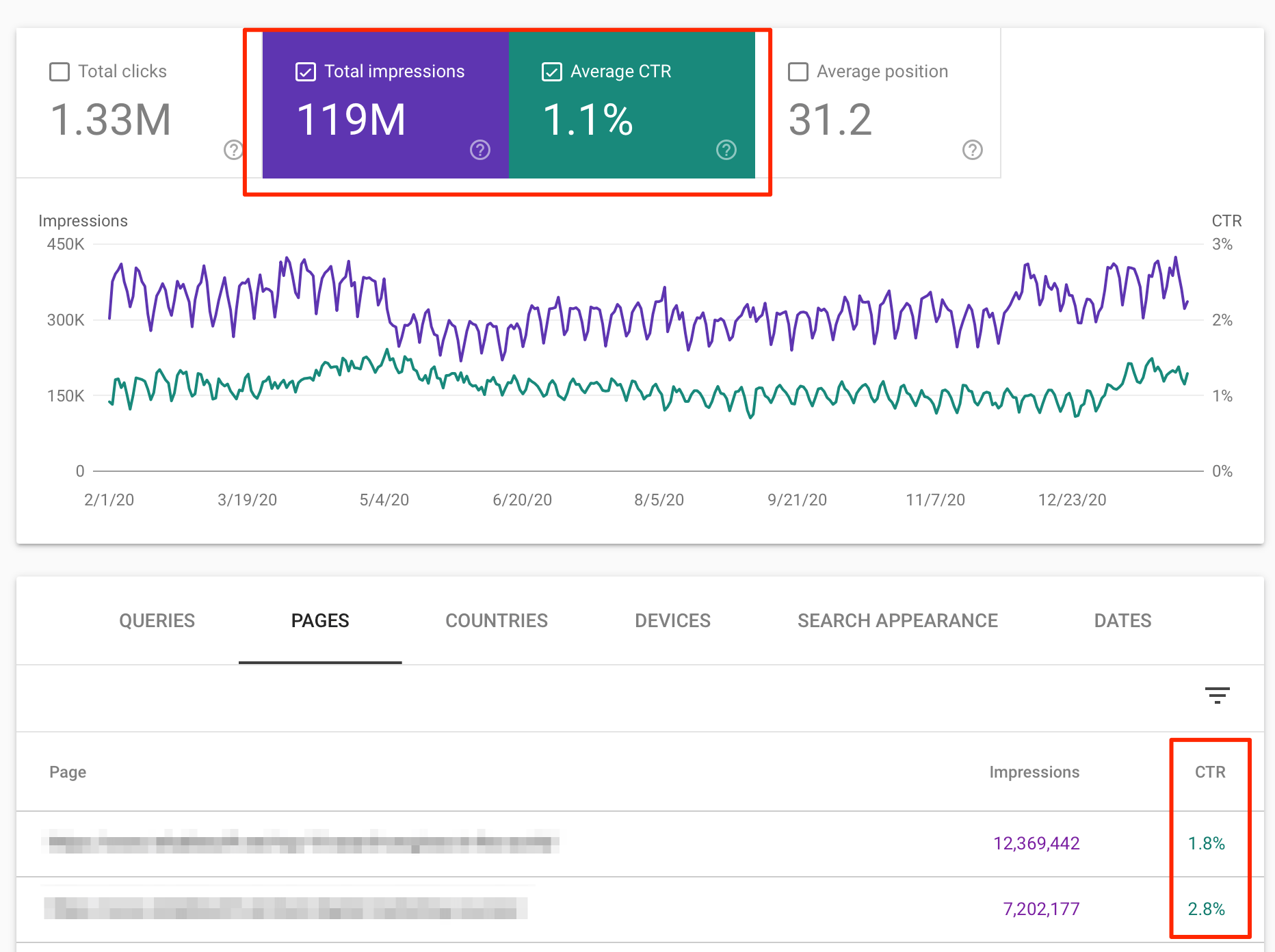
Then, you can filter your results by impression to see which pages or queries get the highest impressions but the lowest number of clicks. These are good candidates for improving your CTR by applying the techniques below.
You can use the "Pages" and "Queries" tabs to measure your CTR by search query, page, or a combination.
How to Improve Organic CTR
Follow these best practices to increase your organic ctr.
- Optimize Your Page Titles
- Add Power Words To Your Descriptions
- Use Short And Meaningful URLs
- Get Featured Snippets
- Target Google Rich Snippets
- Optimize Your Content For Sitelinks
- Optimize Your Website's Favicon
- Add A Table of Contents Above The Fold
- Improve Page Experience Factors
- Use Retargeting To Boost Brand Awareness
1. Optimize Your Page Titles
Nothing will make searchers scroll past your listing faster than a boring title.
Your page title is the main deciding factor in whether or not people will click on your search snippet.
Here are some actionable tips for optimizing your titles and making them more interesting:
Tip 1: Use Brackets
Using brackets in your post title helps to draw the searcher's eye to your search snippet. Plus, it can make lengthy titles seem less long and more engaging.
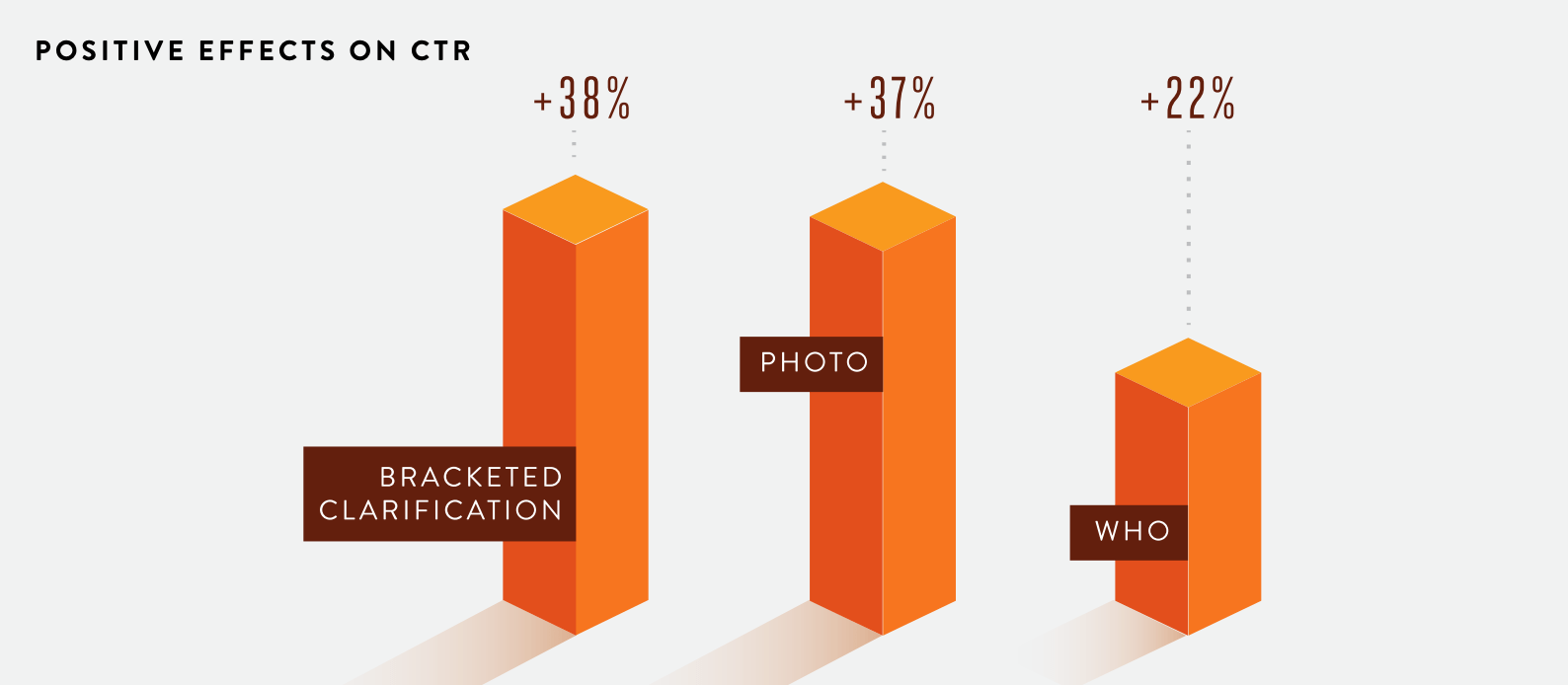
HubSpot found that brackets can increase headline clicks by 40%. There’s a reason that listicle-heavy sites like Buzzfeed have been able to get so popular. A lot of it is based on the strength of their curiosity-inducing headlines.
Tip 2: Use a Numbered List
Adding numbers to your page titles makes your search snippet more interesting. Readers find list posts more engaging and easier to consume. Even if your post isn’t a list post, you should try using numbers in your title if possible.
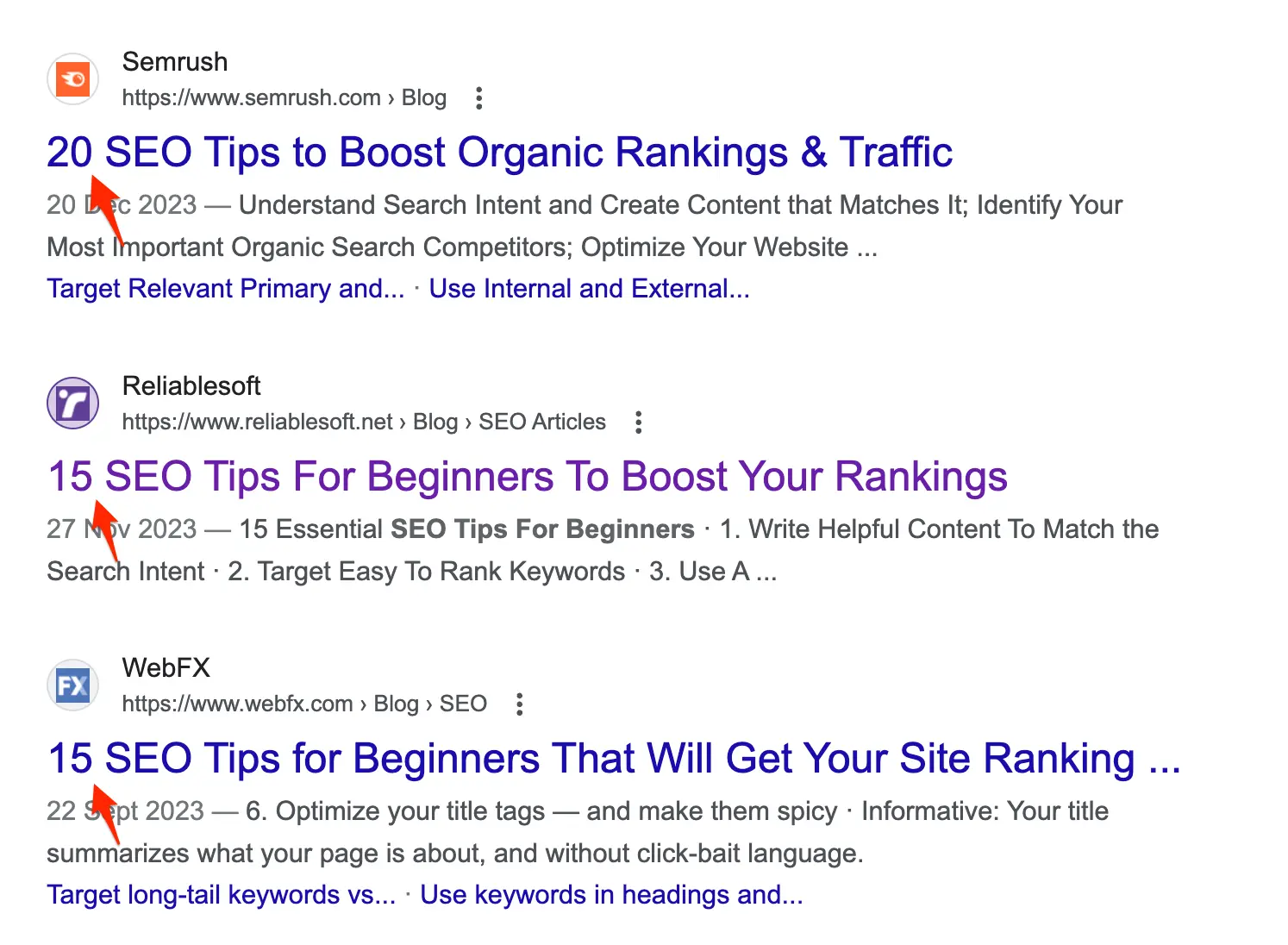
The best way to determine if a list post is applicable is to see if list posts currently rank for your chosen search term. If they are, your post should be rewritten or re-formatted to align with this format.
Tip 3: Use Recent Dates
You should include the date in your title if you’ve recently published or updated content. When users search on Google, they usually add the year in their query to find the most recent results. For example, “SEO Checklist 2024”.
By including the date in your title, you show your readers and the search engines that your content is relevant.
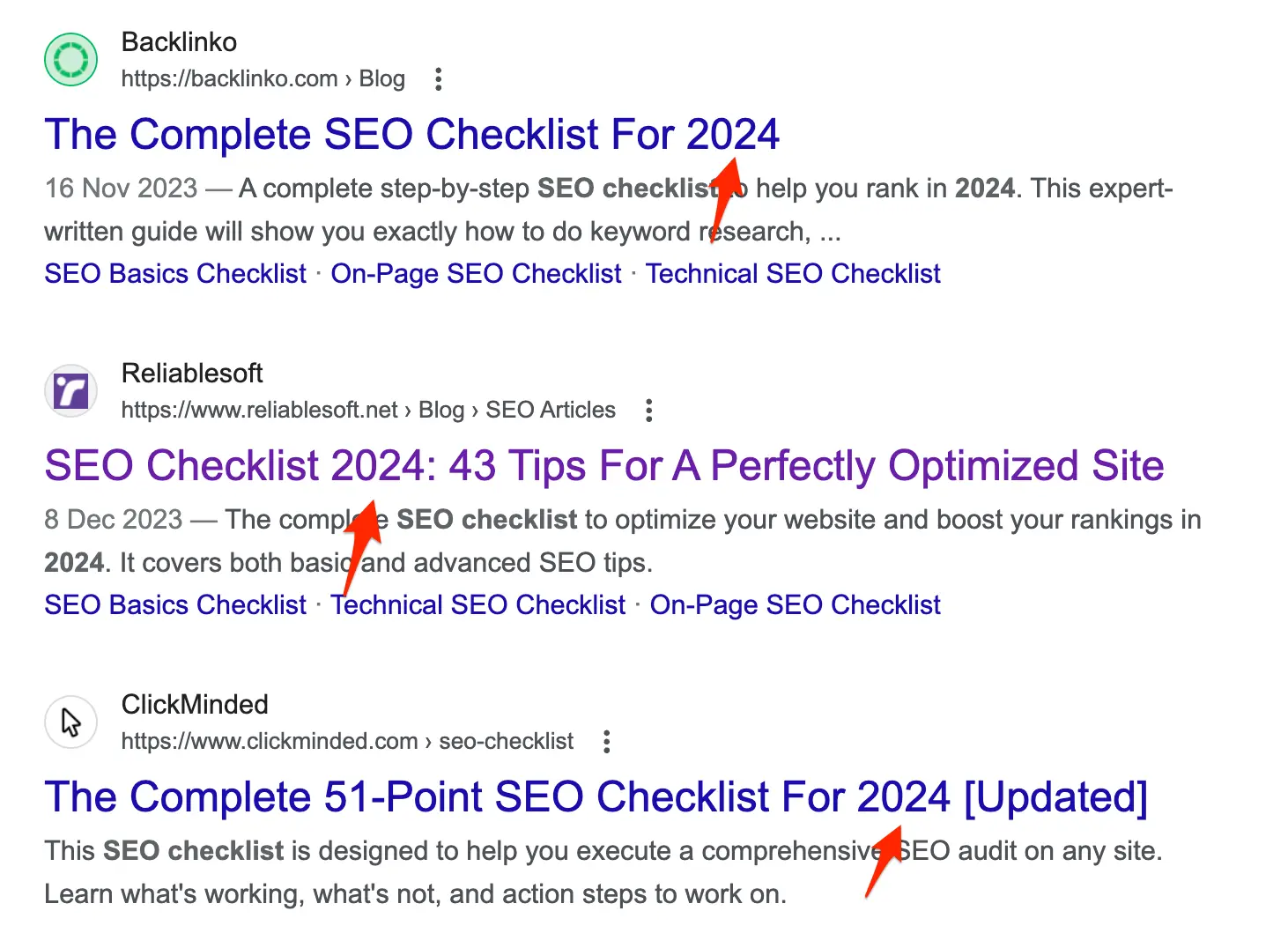
Note that if you use date-based titles, update your post annually to reflect the latest information and year.
Tip 4: Include Your Target Keyword
Your title should include your primary keyword. Ideally, you’ll already know what keyword the page is targeting from doing proper keyword research.
But you can also use a variation of your target keyword, so your post is targeting both the main keyword and long-tail variations of that keyword.
For example, if your page targets the main keyword “cheap blender,” your title tag could be “Best Cheap Blenders.”
Make sure to add your target keyword as close to the beginning of your title as possible.
Tip 5: Use Emotional Words
Your title should include powerful words that tap into your readers' emotions. These words are amazing, incredible, secret, extraordinary, and more.
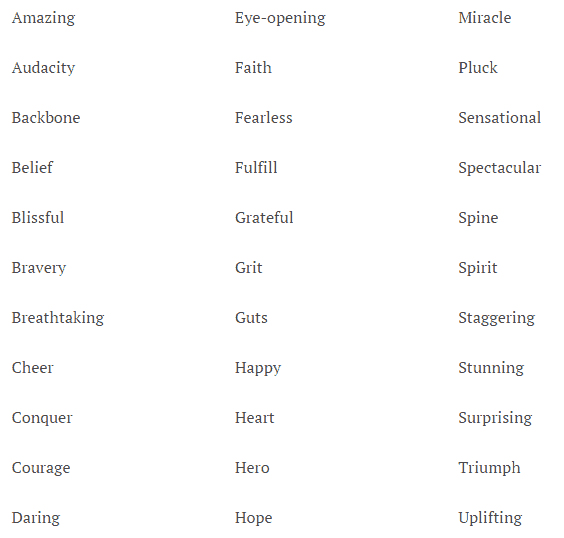
Using these words in your title will raise your CTR by activating curiosity and intrigue in the searchers.
However, you shouldn’t choose these words at random, instead, they should relate to the content in your post.
Spend time going through the content and ask yourself the following questions:
- What’s unique about your content that makes it stand out?
- How does your content address the intent of the keyword (i.e., what are searchers looking for when they type that keyword into Google)?
Then, use these answers to choose the power word/s most applicable. For example, if you’re writing a post about unique productivity tips, your title could be “15 Unorthodox Productivity Tips (That Actually Work)”.
This communicates that the content in your article is unique and will work for readers, unlike many other tips they may have read before.
2. Add Power Words To Your Descriptions
One of the most critical parts of your search engine appearance is your meta description. Your meta description is by far the largest part of your SERP entry.
The meta description is often overlooked and only thought of as a place to add a few keywords. Instead, it should be considered valuable real estate that’ll help educate potential readers about your link.
Writing a compelling description can be a great way to improve your conversion rates. With your meta description, you have approximately 160 characters to hook the searcher's attention and convince them that your page is worth clicking on.
When you don’t create a meta description, the search engines will display a sentence around the keyword from your website. Sometimes, this works well, but other times, it can be taken out of context.
For eCommerce stores, this makes sense since the search will generally be a product-based keyword. But, for other types of content, you should take the time to optimize your description effectively.
Here are some tips for improving your meta description:
- Include your target keywords.
- Use power words that encourage searchers to click.
- Speak to the reader's pain points.
- Keep it within the 160-character limit.
Here is an example of a good meta description:
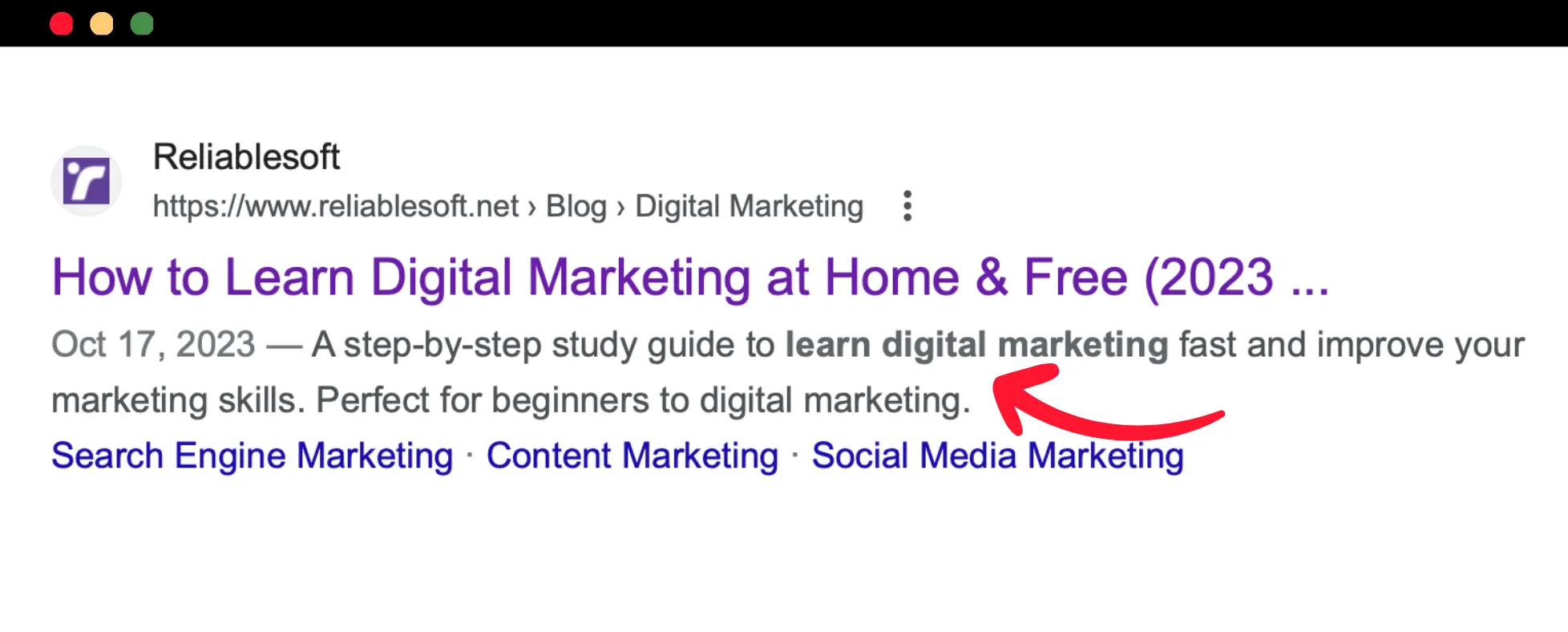
3. Use Short And Meaningful URLs
Your page URL is also shown in the search results. For proper onsite optimization, you should implement short URLs that include your target keyword.
But if you’re still using long URLs, here’s your time to optimize them.
Along with your title and meta description, your URL is another element in your search engine listing. This is an opportunity to include long-tail keywords relevant to the search.

The overall goal of your search engine listing is to give the searcher confidence that your page is the most relevant to what they’re looking for.
The following elements of your search results all play a role:
- The length of your URL
- The URL path (the navigation path to your ranking page)
- The categories present (if any)
Depending on how your site is set up, you might have a variety of categories, for example, website.com>health>meditation>blog-post-title.
Not every site requires structured navigation, but if your site has multiple categories, make sure you’re using keywords that make sense to your reader and the organization of your site.
However, most sites will benefit from using a simple URL like the following: “yourwebsite.com/blog-post-title.”
Here are some tips for providing an SEO-friendly URL:
- Include your target keyword as close to the front of the URL as possible
- Keep your URL as short as possible
- Remove non-relevant information from your URL like date, author name, and complex URL strings
4. Get Featured Snippets
Featured snippets appear at the top of the search results pages. This “position zero” can be incredibly valuable since there’s a good chance searchers will click on your page after reading the featured snippet.
If you’re already ranking on the first page, the best way to obtain the featured snippet is to summarize the answer to the question or search query in a single paragraph, ideally as close to the top of the page. Here is an example:
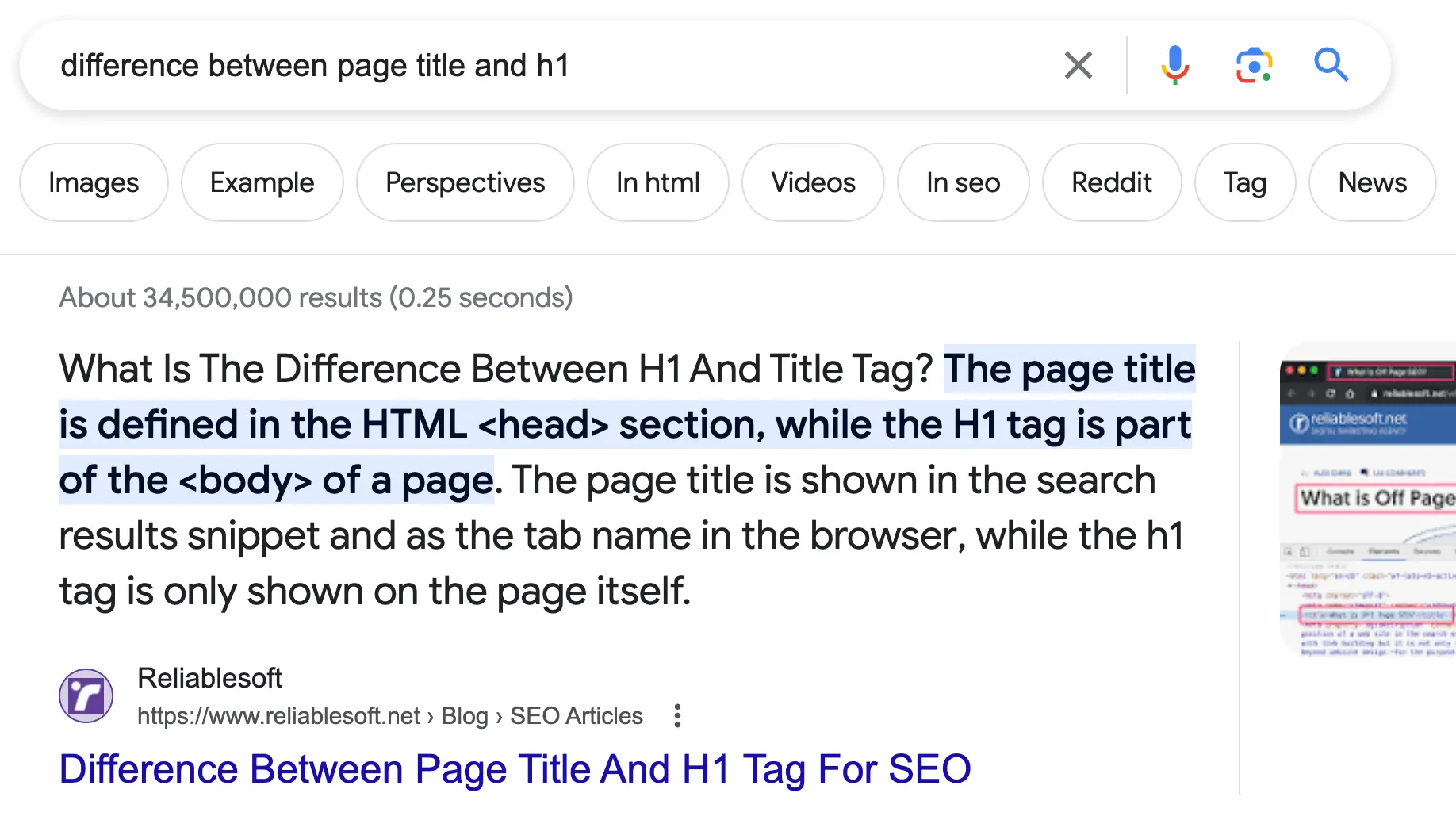
5. Target Google Rich Snippets
can be thought of as an enhanced version of normal search snippets. They can help you stand out in the search results and increase your organic CTR, especially if your competitors aren’t using them.
The standard search results include:
- Title
- URL
- Meta description
When a page includes rich snippets, it can have even more information like:
- Ratings
- Price information
- Images
- Reviews
- Website icon
- Website name
Here is an example:
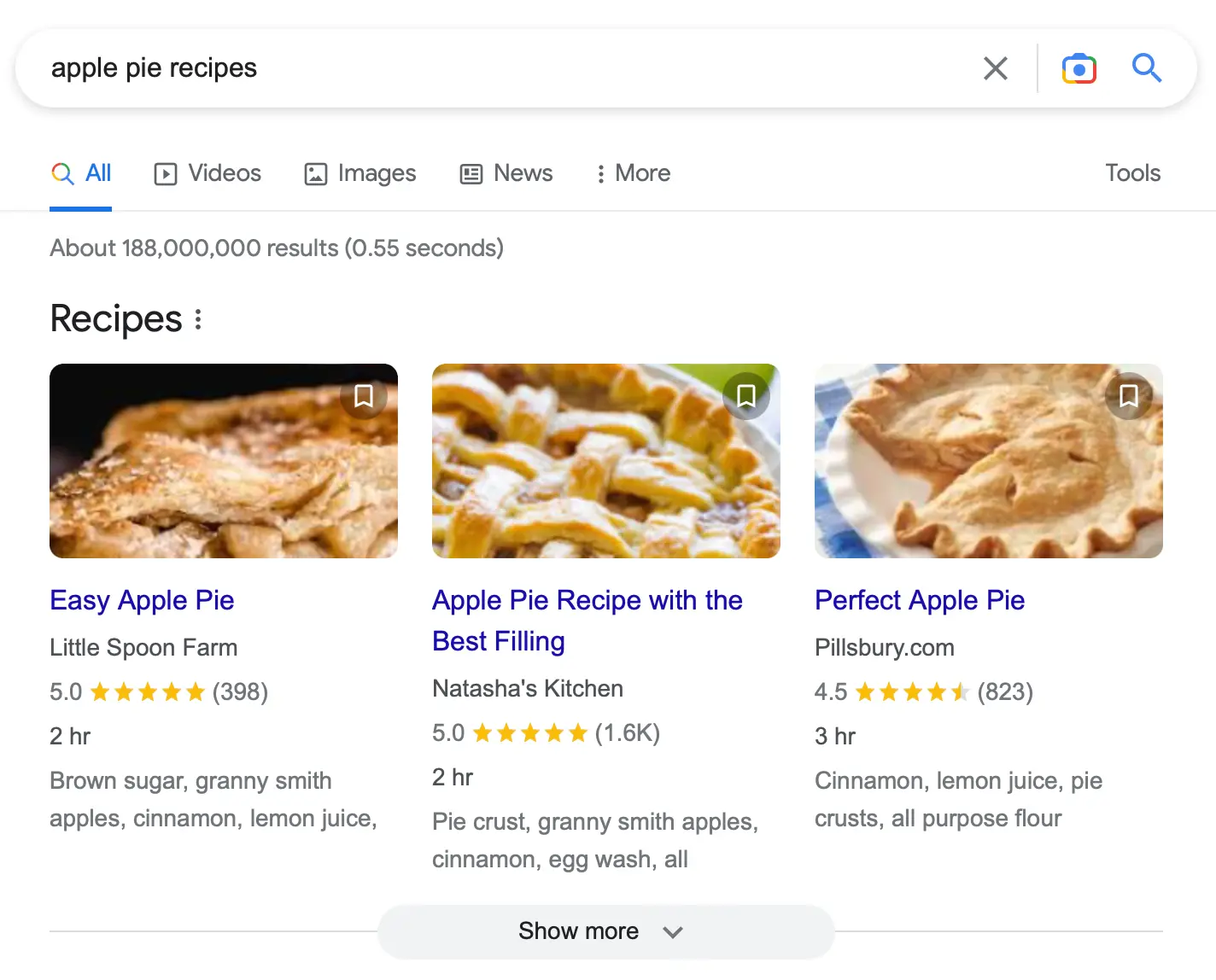
You need to add structured data (aka schema markup) to your website to get rich snippets for your content. Schema markup is a way to describe your site to the search engine bots so they can better understand the type of content on your website.
To add schema markup to your site, you’ll add pre-defined HTML elements that the search engines understand. This won’t be visible to your readers but will exist beneath the surface and be used by the search engines when they crawl your website.
There are various schema types, including videos, images, and articles, but specific content schemas exist for local businesses, organizations, and more. You can view a list of all supported types here.
6. Optimize Your Content For Sitelinks
are another way to improve your search engine appearance. Sitelinks are shown below your meta description in the search results and point to other pages on your website.
Sitelinks help increase the space your search engine listing takes up, leading to more visibility and a higher CTR. Having sitelinks can also improve user experience since visitors can navigate directly to the most relevant page.
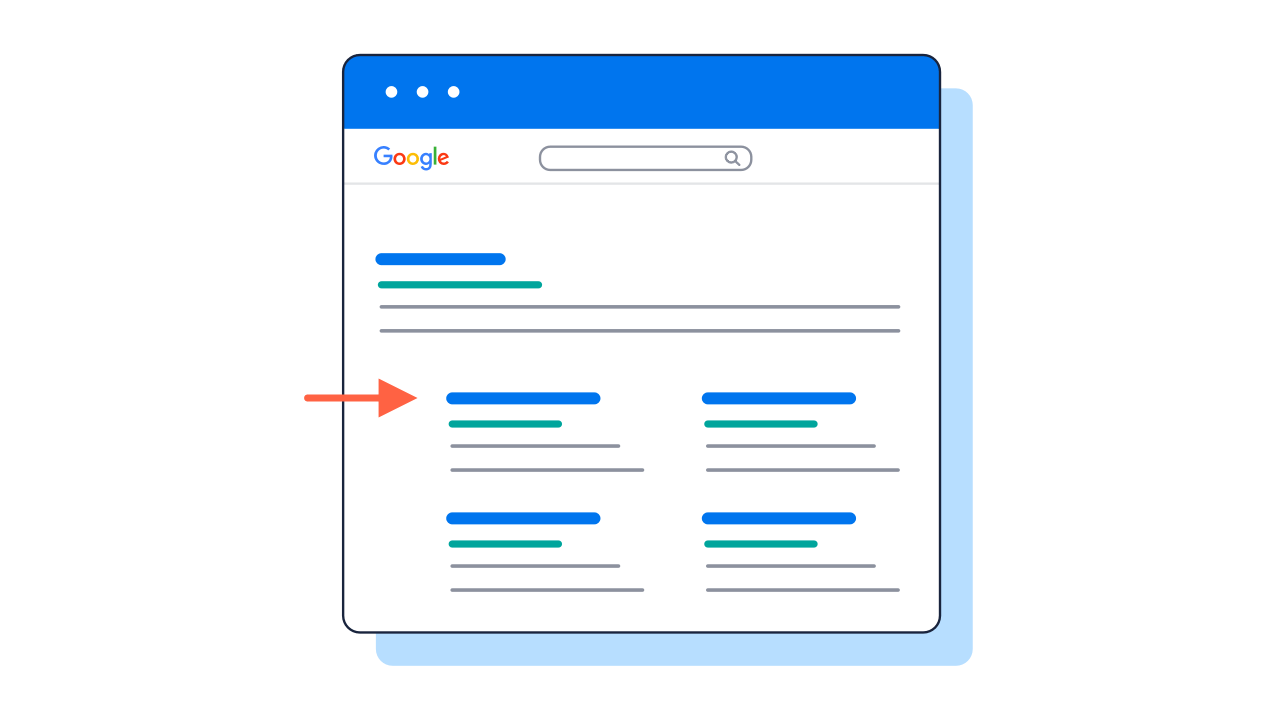
It also signals that Google trusts your website since it doesn’t show sitelinks for every website.
You can’t directly specify sitelinks, as the Google algorithm will pick the most relevant links. However, you can help to influence the presence of sitelinks in the search results through your site structure and internal linking strategy.
7. Optimize Your Website's Favicon
The favicon is another element that is shown in the search results. If you want your listing to look professional, you should spend a few minutes optimizing your favicon.
Follow these simple steps:
- Ensure that your favicon is a square image. Its size must be a multiple of 48px. For example: 48x48px, 96x96px, 144x144px, and so on.
- Add a <link> tag to the header of your home page with the following syntax:
<link rel="icon" href="/path/to/favicon.ico">. - Check that your favicon looks clear and easily recognizable on the SERPs.
8. Add A Table of Contents Above The Fold
Adding a table of contents above the fold is great for the user experience and helps Google understand your content better. It's also an excellent way to get additional links in your search snippet and increase your CTR.
Here is an example:
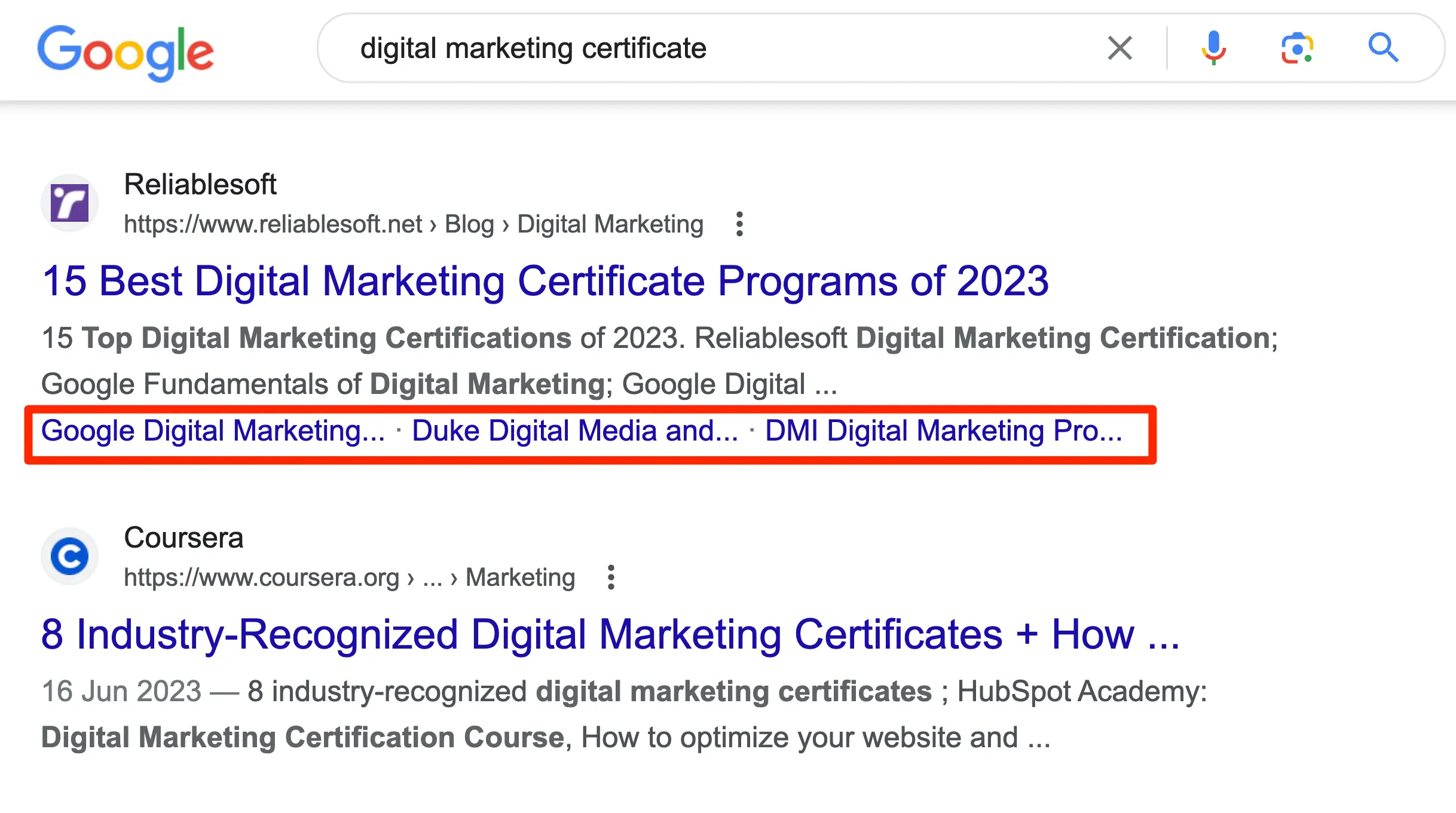
You can do this by creating named sections within your post that navigate to specific headings within your post content.
Here’s what the HTML for a named section would look like:
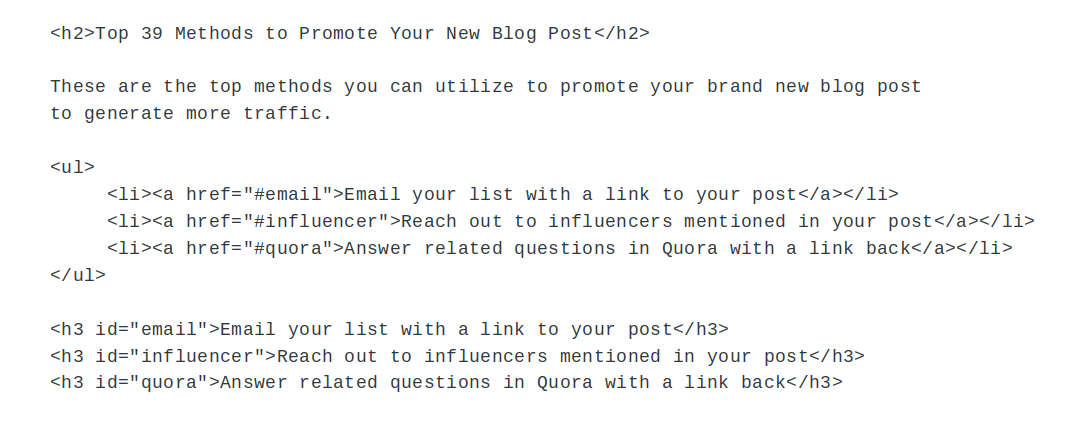
When you add these tags to your post headings, they’ll appear in the search engines underneath your meta descriptions. This allows searchers to immediately navigate to a specific section of your post by clicking the link in the search results.
9. Improve Page Experience Factors
Page experience factors like page loading speed, secure connections (HTTPS), intrusive popups, too many ads, and content formatting can influence the position of your website in the search results and CTR.

Consider this scenario: a user clicks on your listing in the search results, lands on your website, but quickly hits the back button to return to the search results without engaging with your content.
This behavior is a strong signal to Google that the user did not find what they were looking for or had a bad experience on your site. Such signals can negatively impact your website's ranking position.
By improving page experience factors, you boost your chances of higher rankings and increase the likelihood of visitors staying on your site, which can positively affect your organic CTR.
10. Use Retargeting To Boost Brand Awareness
Ultimately, the best CTR hack is to create a memorable brand. Think about it this way: When you search for something on Google and see your favorite brand or website in the search results, you will click the result, no matter where it happens to rank.
Building a brand that people know and love takes some time, but you can shortcut the process through paid ads.
Facebook and Google Ads can quickly get your brand in front of many people. You can use the retargeting feature to run ads to people who have visited your site.
When these people who have already visited your site see your brand repeatedly via ads, it reinforces your brand in their minds.
Then, the next time they see your site in the search results, they’ll skip over the rest and click on your listing, even if you aren’t ranking in the top one or two spots.
This will also help your site rise in the search engine rankings. Since your CTR will be much higher, this signals to Google that your site is high quality and should rank higher up the page.
Key Learnings
Your organic CTR is an important part of SEO under your control. Many aspects of SEO require immense work, but optimizing your search engine listing is less time-intensive and can deliver great results.
Failing to optimize your search engine listings means you’re missing out on potential traffic that could be yours with a few tweaks.
You can do a lot to improve your CTR, but one of the best places to start is by identifying low-converting pages with Google Search Console and starting with these. Once the conversion rates improve on your lowest pages, you can make small tweaks to make your higher-converting pages convert even better.
Optimizing your search engine listings involves creating an interesting page title that encourages users to click, creating a compelling meta description, and optimizing your URLs to be short and include your target keyword.
Next, you can move on to optimizing your content for featured snippets, rich snippets and sitelinks, which will further enhance your search engine appearance and even improve your rankings.
Finally, with the steps above mastered, you can run retargeting ads to people who have already visited your site to encourage them to click your search engine listing, no matter where you happen to rank.
Improving your CTRs won’t happen overnight, but it’s a worthwhile optimization effort to boost your rankings and traffic.



